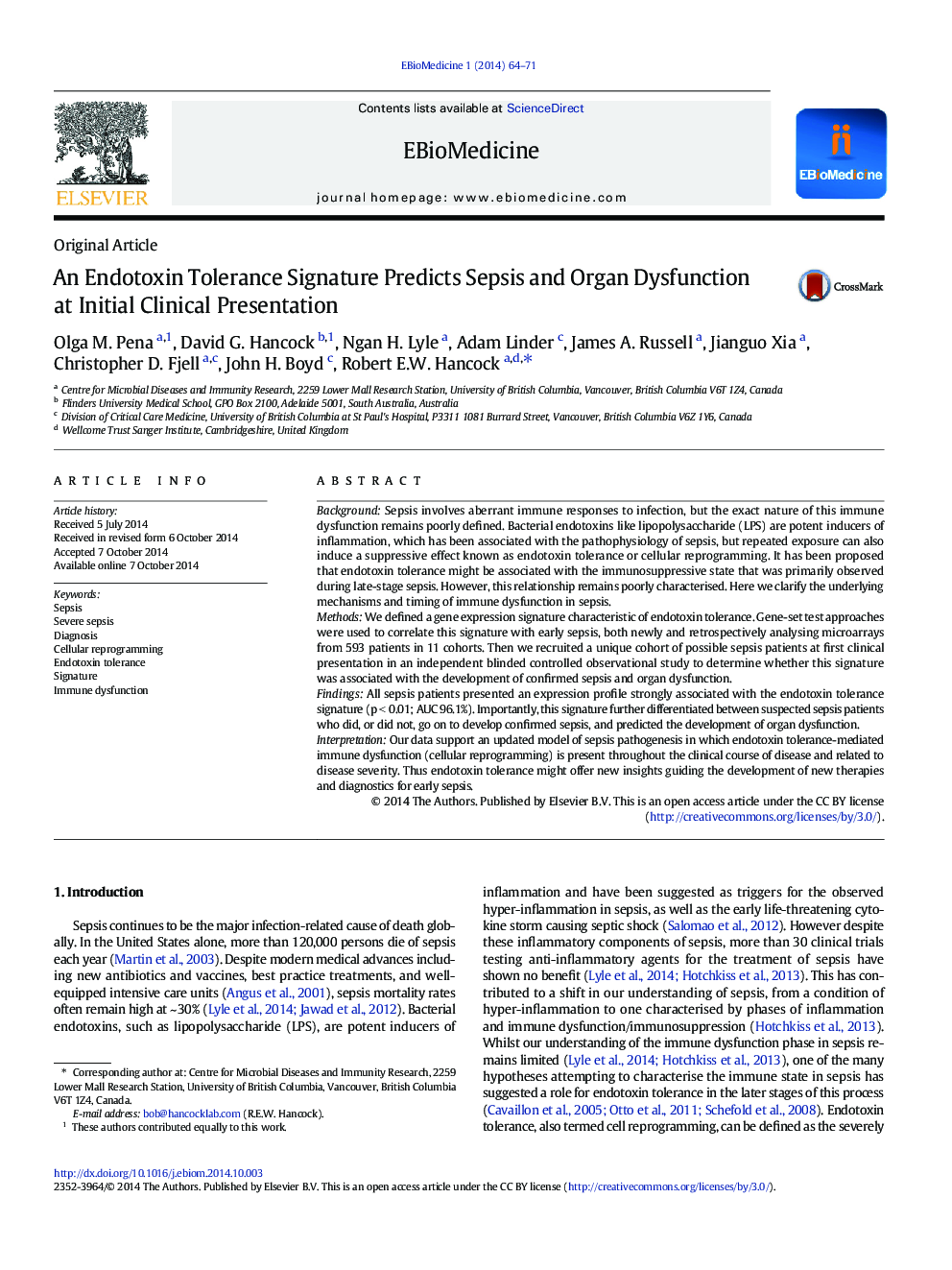| کد مقاله | کد نشریه | سال انتشار | مقاله انگلیسی | نسخه تمام متن |
|---|---|---|---|---|
| 2121150 | 1085770 | 2014 | 8 صفحه PDF | دانلود رایگان |
• Addresses sepsis that affects up to 18 million persons annually with up to 5 million deaths worldwide.
• Describes an endotoxin tolerance gene expression signature associated with consecutive treatments with endotoxin and reflecting cellular reprogramming.
• Using a meta-analysis of the literature demonstrates the statistically significant association (p < 0.01; AUC 96.1%) of this endotoxin tolerance signature with early (day 1–3 after ICU admission) sepsis in 593 patients in 11 adult or child cohorts.
• Demonstrates, at first clinical presentation, the ability of this signature to predict the eventual diagnosis of sepsis and organ failure in an independent blinded controlled observational study of a unique cohort of possible sepsis patients.
• This study provides new insights that have the potential to guide the development of new therapies and diagnostics for early sepsis.
BackgroundSepsis involves aberrant immune responses to infection, but the exact nature of this immune dysfunction remains poorly defined. Bacterial endotoxins like lipopolysaccharide (LPS) are potent inducers of inflammation, which has been associated with the pathophysiology of sepsis, but repeated exposure can also induce a suppressive effect known as endotoxin tolerance or cellular reprogramming. It has been proposed that endotoxin tolerance might be associated with the immunosuppressive state that was primarily observed during late-stage sepsis. However, this relationship remains poorly characterised. Here we clarify the underlying mechanisms and timing of immune dysfunction in sepsis.MethodsWe defined a gene expression signature characteristic of endotoxin tolerance. Gene-set test approaches were used to correlate this signature with early sepsis, both newly and retrospectively analysing microarrays from 593 patients in 11 cohorts. Then we recruited a unique cohort of possible sepsis patients at first clinical presentation in an independent blinded controlled observational study to determine whether this signature was associated with the development of confirmed sepsis and organ dysfunction.FindingsAll sepsis patients presented an expression profile strongly associated with the endotoxin tolerance signature (p < 0.01; AUC 96.1%). Importantly, this signature further differentiated between suspected sepsis patients who did, or did not, go on to develop confirmed sepsis, and predicted the development of organ dysfunction.InterpretationOur data support an updated model of sepsis pathogenesis in which endotoxin tolerance-mediated immune dysfunction (cellular reprogramming) is present throughout the clinical course of disease and related to disease severity. Thus endotoxin tolerance might offer new insights guiding the development of new therapies and diagnostics for early sepsis.
Journal: EBioMedicine - Volume 1, Issue 1, November 2014, Pages 64–71
